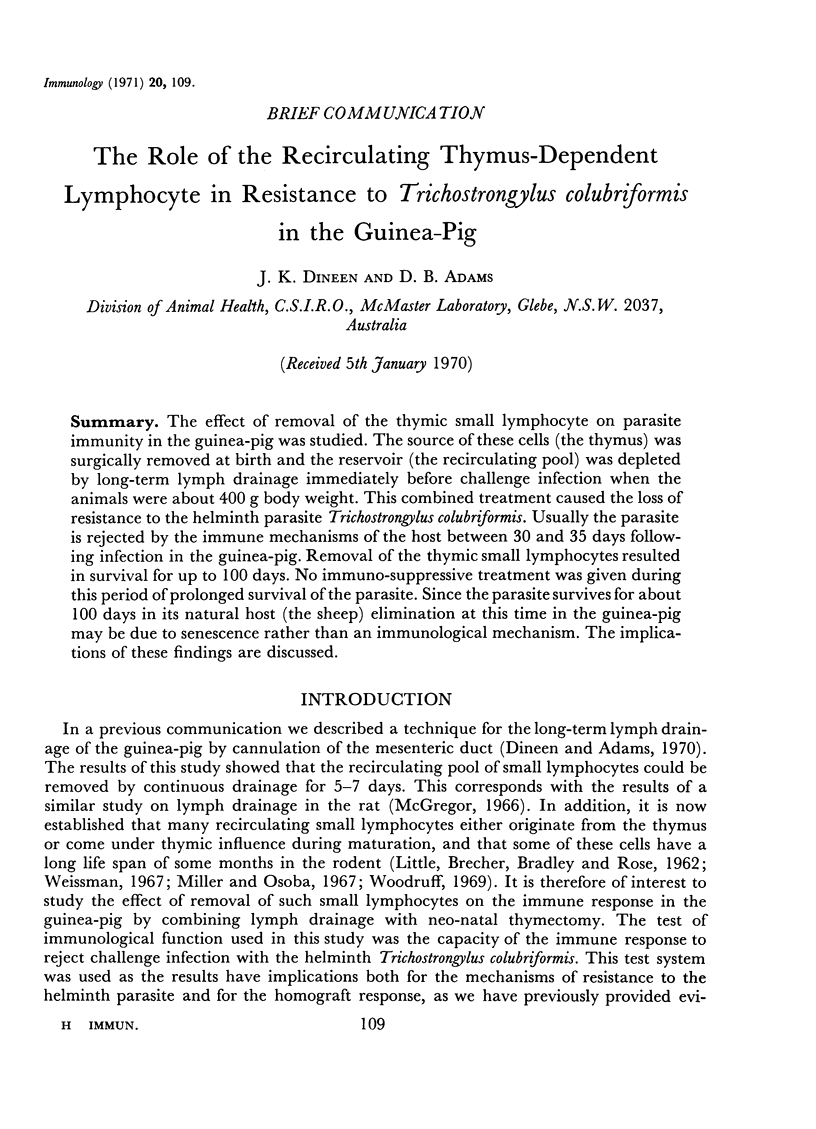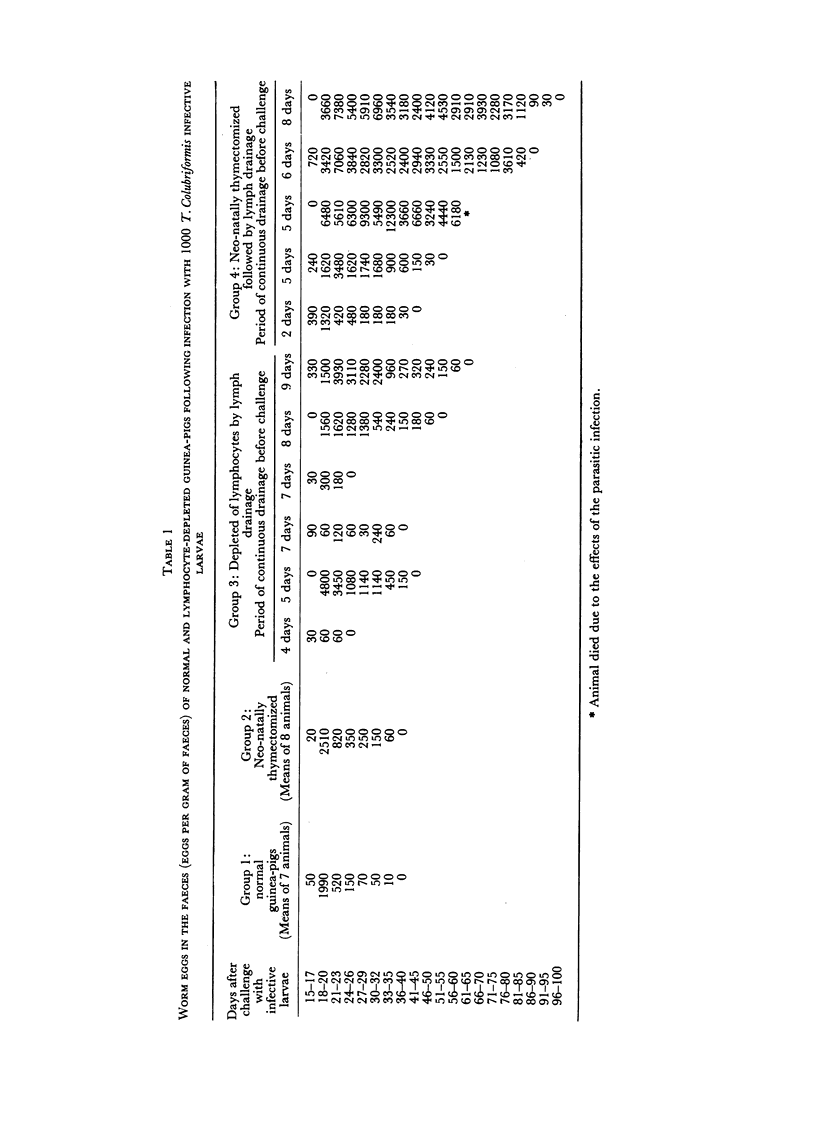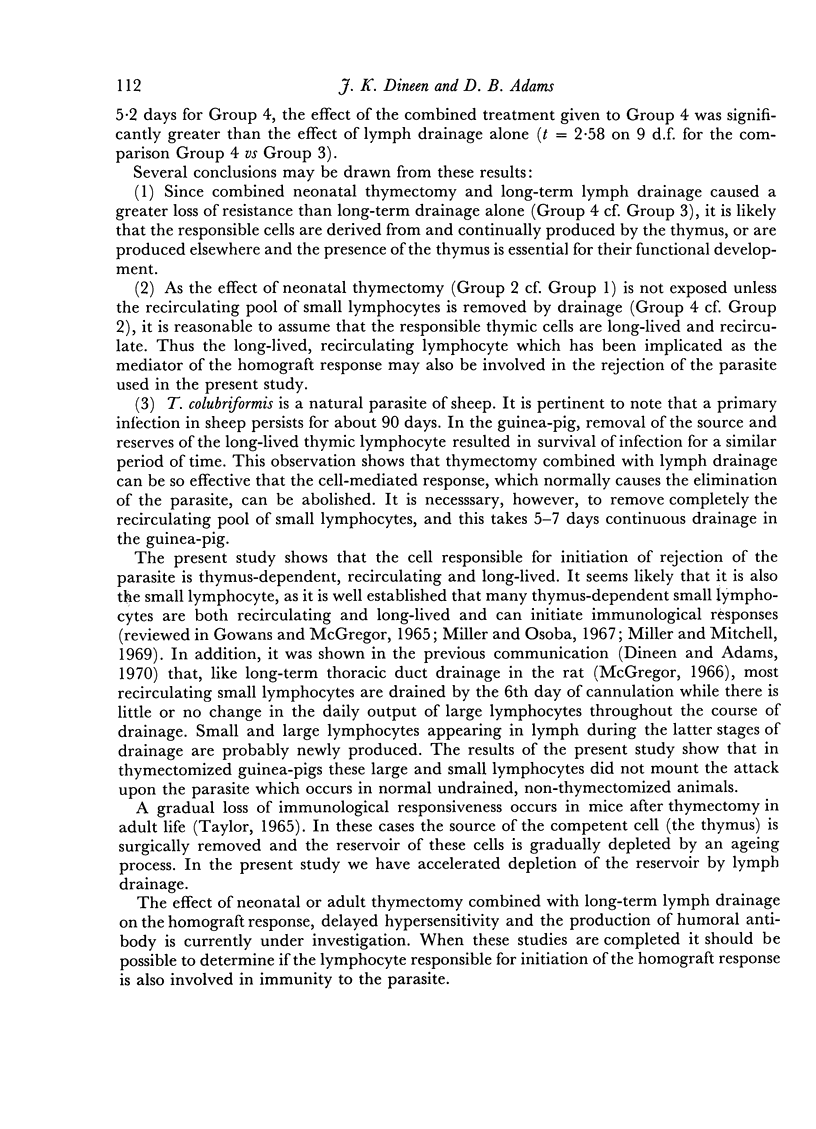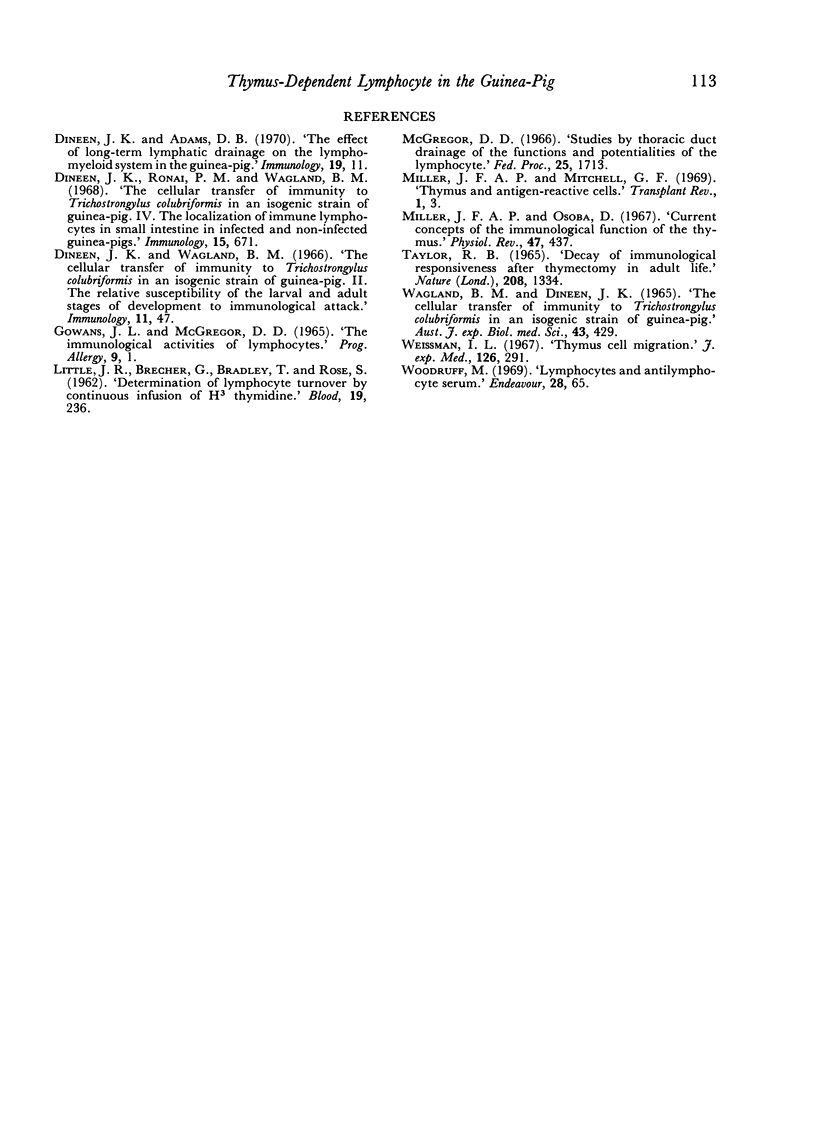Abstract
The effect of removal of the thymic small lymphocyte on parasite immunity in the guinea-pig was studied. The source of these cells (the thymus) was surgically removed at birth and the reservoir (the recirculating pool) was depleted by long-term lymph drainage immediately before challenge infection when the animals were about 400 g body weight. This combined treatment caused the loss of resistance to the helminth parasite Trichostrongylus colubriformis. Usually the parasite is rejected by the immune mechanisms of the host between 30 and 35 days following infection in the guinea-pig. Removal of the thymic small lymphocytes resulted in survival for up to 100 days. No immuno-suppressive treatment was given during this period of prolonged survival of the parasite. Since the parasite survives for about 100 days in its natural host (the sheep) elimination at this time in the guinea-pig may be due to senescence rather than an immunological mechanism. The implications of these findings are discussed.
Full text
PDF




Selected References
These references are in PubMed. This may not be the complete list of references from this article.
- AGLAND B. M., DINEEN J. K. THE CELLULAR TRANSFER OF IMMUNITY TO TRICHOSTRONGYLUS COLUBRIFORMIS IN AN ISOGENIC STRAIN OF GUINES-PIG. Aust J Exp Biol Med Sci. 1965 Jul;43:429–438. doi: 10.1038/icb.1965.77. [DOI] [PubMed] [Google Scholar]
- Dineen J. K., Adams D. B. The effect of long-term lymphatic drainage on the lympho-myeloid system in the guinea-pig. Immunology. 1970 Jul;19(1):11–30. [PMC free article] [PubMed] [Google Scholar]
- Dineen J. K., Ronai P. M., Wagland B. M. The cellular transfer of immunity to Trichostrongylus colubriformis in an isogenic strain of guinea-pig. IV. The localization of immune lymphocytes in small intestine in infected and non-infected guinea-pigs. Immunology. 1968 Nov;15(5):671–679. [PMC free article] [PubMed] [Google Scholar]
- Dineen J. K., Wagland B. M. The cellular transfer of immunity to Trichostrongylus colubriformis in an isogenic strain of guinea-pig. II. The relative susceptibility of the larval and adult stages of the parasite to immunological attack. Immunology. 1966 Jul;11(1):47–57. [PMC free article] [PubMed] [Google Scholar]
- LITTLE J. R., BRECHER G., BRADLEY T. R., ROSE S. Determination of lymphocyte turnover by continuous infusion of H3 thymidine. Blood. 1962 Feb;19:236–242. [PubMed] [Google Scholar]
- McGregor D. D. Studies by thoracic duct drainage of the functions and potentialities of the lymphocyte. Fed Proc. 1966 Nov-Dec;25(6):1713–1719. [PubMed] [Google Scholar]
- Miller J. F., Mitchell G. F. Thymus and antigen-reactive cells. Transplant Rev. 1969;1:3–42. doi: 10.1111/j.1600-065x.1969.tb00135.x. [DOI] [PubMed] [Google Scholar]
- Miller J. F., Osoba D. Current concepts of the immunological function of the thymus. Physiol Rev. 1967 Jul;47(3):437–520. doi: 10.1152/physrev.1967.47.3.437. [DOI] [PubMed] [Google Scholar]
- Taylor R. B. Decay of immunological responsiveness after thymectomy in adult life. Nature. 1965 Dec 25;208(5017):1334–1335. doi: 10.1038/2081334a0. [DOI] [PubMed] [Google Scholar]
- Weissman I. L. Thymus cell migration. J Exp Med. 1967 Aug 1;126(2):291–304. doi: 10.1084/jem.126.2.291. [DOI] [PMC free article] [PubMed] [Google Scholar]
- Woodruff M. Lymphocytes and antilymphocytic serum. Endeavour. 1969 May;28(104):65–67. [PubMed] [Google Scholar]


